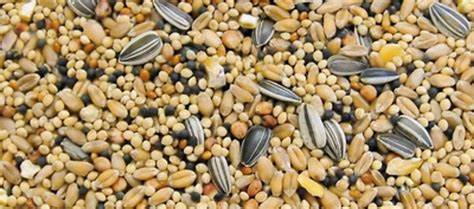The United States bird food market is witnessing a significant surge, projected to reach USD 4.05 billion by 2035, according to market analysts. This growth is primarily fueled by a growing love for backyard birdwatching, increasing interest in sustainable feeding practices, and a rise in awareness of biodiversity conservation.
Bird Feeding: A Fast-Growing Hobby Across America
Birdwatching has long been a popular pastime in the United States. But in recent years, the hobby has grown into a widespread movement, especially post-pandemic. Millions of Americans are now investing in high-quality bird feed to attract and support a diverse range of birds in their backyards.

The U.S. Fish and Wildlife Service estimates that more than 45 million Americans engage in birdwatching annually. This growing community is creating a stable demand for bird food, bird feeders, and bird houses.
In fact, according to a report by Research and Markets, the increasing number of pet birds and the rising interest in wild bird feeding are driving both the urban and rural bird food demand segments.
Sustainable and Organic Bird Food on the Rise
One of the key trends shaping the future of the bird food market in the U.S. is the growing demand for eco-friendly and organic bird feed products. Consumers are now more conscious of the environmental impact of what they offer to birds. This has led to a rise in the availability of organic seeds, pesticide-free blends, and biodegradable packaging.
Brands that prioritize sustainability are gaining a competitive edge. Companies like Lyric Wild Bird Food, Kaytee, and Audubon Park are expanding their product lines to cater to environmentally aware bird lovers.
In an era where climate change and habitat loss are constant concerns, supporting native bird species through healthy food choices is seen as a way to protect the local ecosystem.
Market Dynamics: What’s Fueling the Growth?
Several factors contribute to the rapid expansion of the U.S. bird food market:
- Urbanization and loss of habitat – More people are feeding birds as a way to support wildlife displaced by urban development.
- Educational awareness – Schools, NGOs, and environmental groups are educating communities on the importance of bird conservation.
- Pandemic lifestyle shifts – The COVID-19 pandemic increased interest in outdoor hobbies, including birdwatching and gardening.
- Social media influence – Platforms like Instagram, TikTok, and YouTube have turned birdwatching into a visually engaging activity, inspiring younger audiences to participate.
A Forbes article reports that birding has become especially popular among millennials and Gen Z, creating a new demographic that is both tech-savvy and environmentally conscious.
Segmentation: Wild Bird vs. Pet Bird Food
The market is broadly segmented into wild bird food and pet bird food, with wild bird food making up the majority share. Homeowners, garden enthusiasts, and retirees are the primary consumers in this category. Wild bird food sales are higher in suburban and rural areas, where residents are more likely to have outdoor spaces for feeding birds.

Pet bird food, on the other hand, is seeing steady growth in urban areas. The demand for specialized feed for species like parrots, cockatiels, and canaries is increasing, with premium nutrition and vitamin-enriched blends leading the market.
Retail and Online Distribution: A Blended Channel Strategy
While brick-and-mortar stores like PetSmart, Home Depot, and Walmart remain significant players in the bird food retail space, the online marketplace is growing rapidly.
E-commerce platforms like Amazon, Chewy, and Tractor Supply Co. have made it easier than ever for consumers to buy bird food in bulk, subscribe to monthly deliveries, and read customer reviews before purchasing.
According to a Statista report, pet product e-commerce (which includes bird food) in the U.S. is expected to exceed $20 billion by 2026, highlighting the potential of digital sales in this niche segment.
Key Players and Innovation in the Industry
Leading companies in the U.S. bird food market are focusing on product innovation, improved packaging, and niche targeting. Some of the major names include:
- Kaytee Products, Inc.
- Central Garden & Pet Company
- ScottsMiracle-Gro
- Wild Delight
- Wagner’s
Many of these companies are investing in research and development to create seed blends that cater to specific bird species, seasons, and regions.
Challenges: Pricing and Climate Impact
Despite the positive outlook, the bird food market also faces certain challenges. Rising raw material costs, such as seeds and grains, may lead to higher prices. Additionally, climate change and drought conditions can affect crop yields, impacting supply chains.
Yet, the long-term market projection remains optimistic due to strong consumer demand and environmental motivation.
Future Outlook: USD 4.05 Billion by 2035
With continued support from conservation groups, improved product innovation, and a growing base of bird enthusiasts, the U.S. bird food market is poised to grow steadily over the next decade.
Analysts predict a compound annual growth rate (CAGR) of over 5.3% through 2035. The market is expected to reach a total valuation of USD 4.05 billion, making it one of the fastest-growing niche segments in the broader pet care and wildlife sector.
Conclusion: Feeding Birds, Fueling a Movement
Bird feeding in the U.S. has grown beyond a hobby—it’s a reflection of a collective effort to reconnect with nature and preserve biodiversity. As consumer preferences shift toward sustainable and mindful living, the bird food market is not just surviving—it’s soaring.
Also Read – Krones Earns Spot in USA Today’s Best Workplaces of 2025





